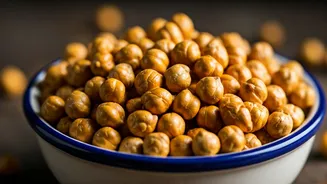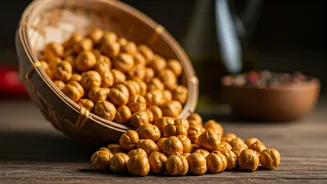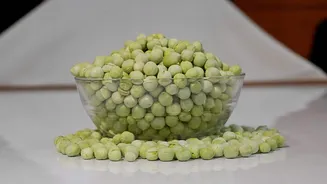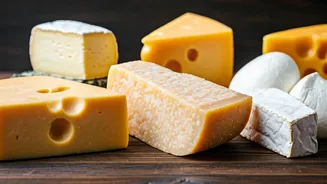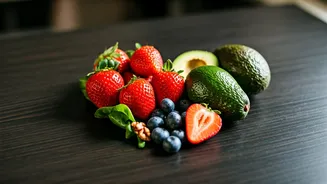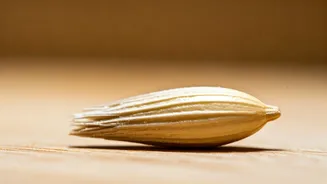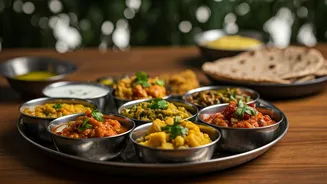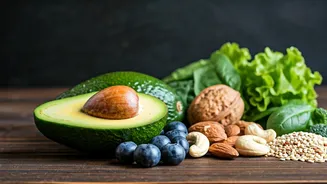Chickpeas: A Close Up
Chickpeas, also known as garbanzo beans, are indeed a good source of protein and fiber. However, the roasting process, while making them a convenient snack,
can affect their nutritional value. Dietitians are highlighting the need for individuals to understand that roasting can lead to both positive and negative transformations within the chickpea. Their concerns center around factors such as potential nutrient loss and the addition of other ingredients during the roasting process that might make them less healthy than their raw counterparts.
Roasted Chickpeas' Profile
The main concern of dietitians lies in the potential alterations during the roasting of chickpeas. While the roasting process can create a crunchy texture that is attractive to consumers, it can also impact the levels of certain nutrients, such as some vitamins, that are sensitive to heat. Besides, many commercially available roasted chickpeas contain added ingredients like excessive salt, sugar, and oils to enhance their flavor. These additions, even in small quantities, can quickly increase the caloric and sodium content. These ingredients can negate the health benefits of chickpeas, potentially contributing to weight gain and high blood pressure, if consumed frequently without moderation.
Fiber vs. Nutrition
Chickpeas are celebrated for their fiber content, which aids digestion and promotes a feeling of fullness. However, the fiber content may not be enough to override the potential downsides if the chickpeas are roasted in a way that compromises their nutritional quality. Dietitians also advise that while fiber is critical for health, a diet based solely on roasted chickpeas does not necessarily ensure a balanced intake of all essential nutrients. To maximize the health benefits, it is crucial to balance the consumption of chickpeas with other whole foods that provide a wider array of vitamins and minerals. This ensures a more complete dietary approach that supports overall well-being and avoids any potential deficiencies.
Healthy Consumption Habits
Instead of completely avoiding roasted chickpeas, dietitians suggest a more mindful approach to consuming them. They advise that people should read the labels carefully and opt for minimally processed products with low sodium and no added sugar or unhealthy fats. Making chickpeas at home allows for more control over the ingredients used, making it an excellent way to maintain their health benefits. Combining chickpeas with other food groups, such as vegetables, lean proteins, and whole grains, can enhance the nutritional value of a meal. These practices provide a comprehensive approach towards benefiting from the positive aspects of chickpeas while minimizing potential risks.
Balancing Diet Choices
The key message conveyed by dietitians is the need for balance and variety in your diet, rather than relying solely on any single food item. Roasted chickpeas can be included as a snack, but they should not be seen as a replacement for other nutritious foods. Individuals are urged to view roasted chickpeas as only one component of a holistic nutritional plan. The best approach involves combining them with different food groups, such as fruits, vegetables, lean proteins, and whole grains. This method helps to ensure you get a broad range of nutrients and fosters a balanced dietary strategy that supports overall health and well-being, while still enjoying the occasional chickpea snack.
